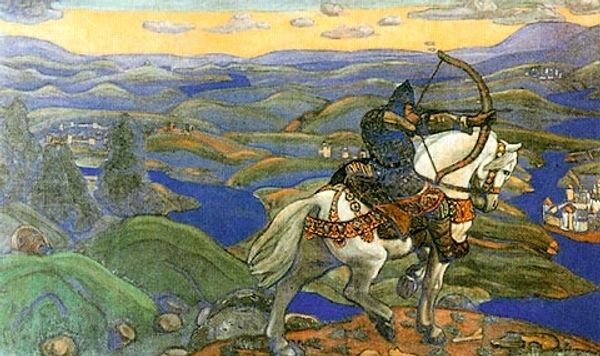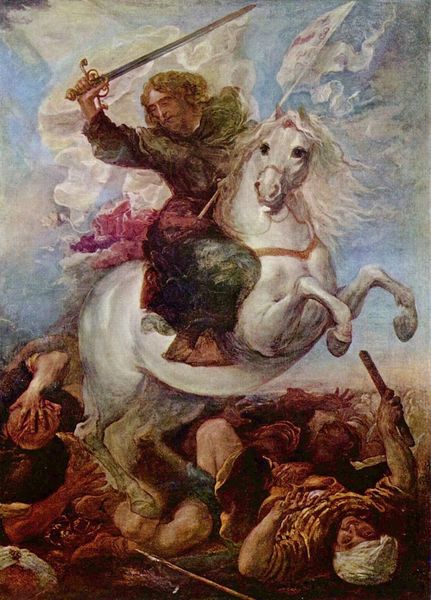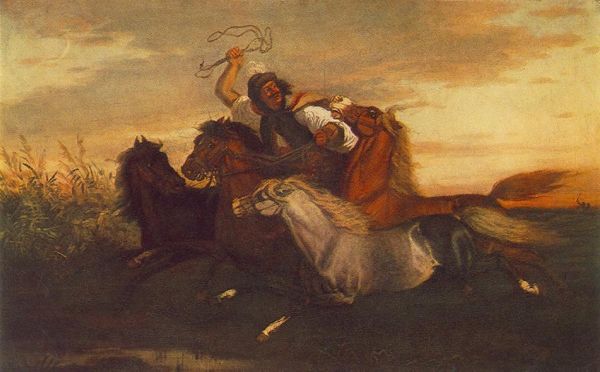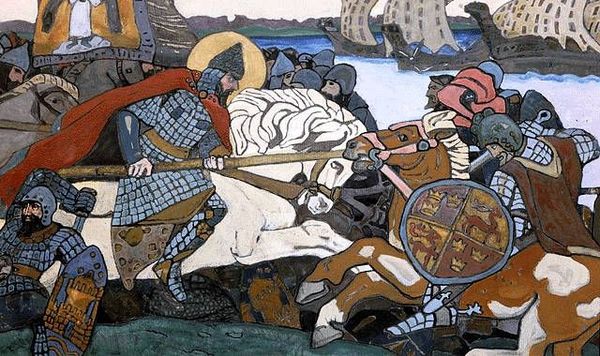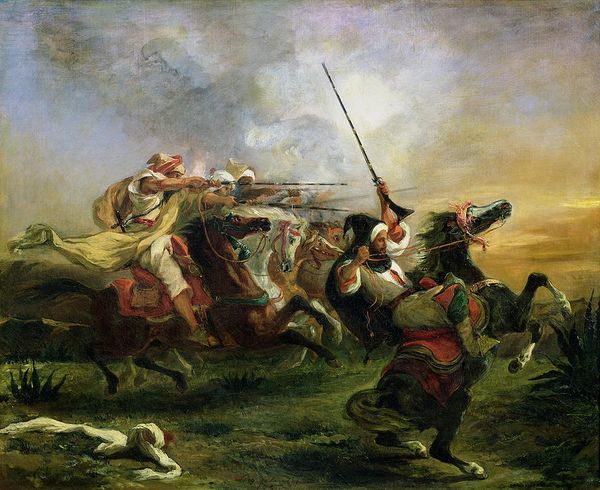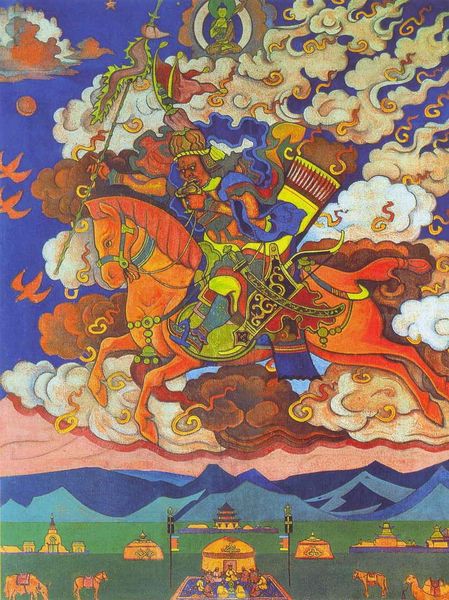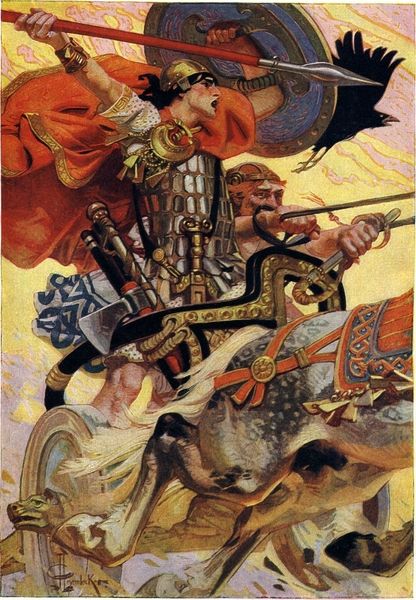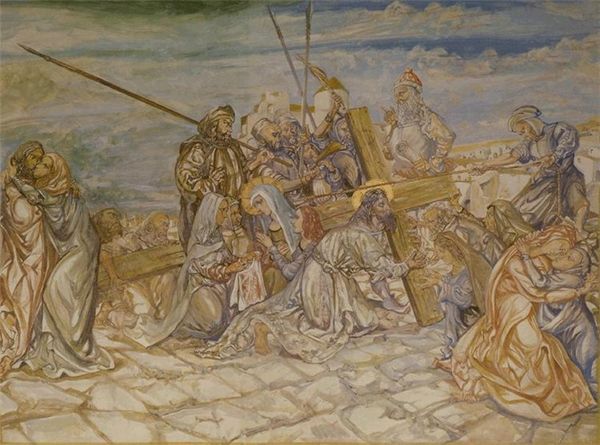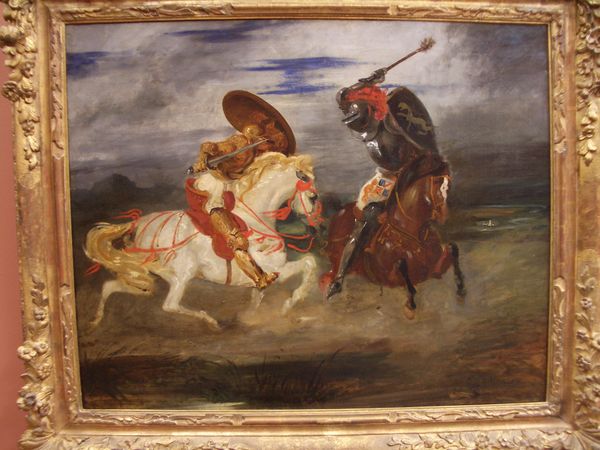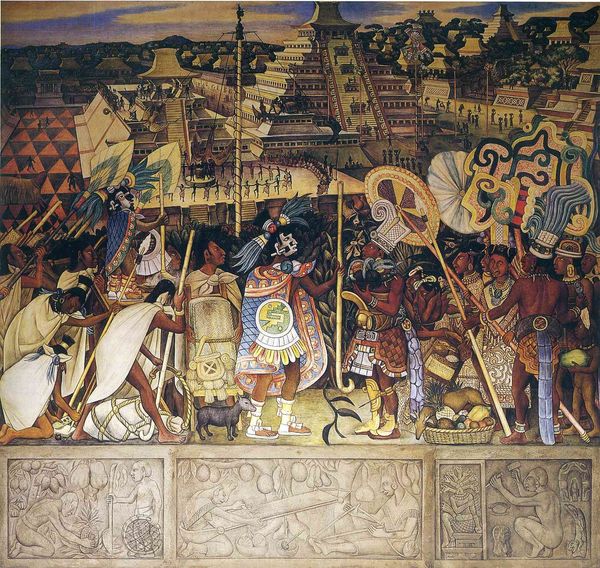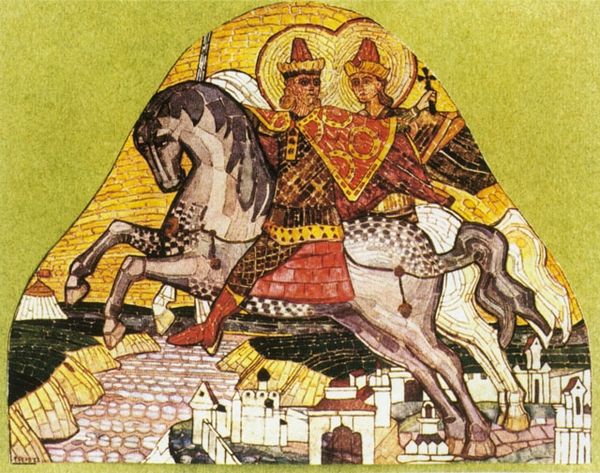
painting, oil-paint
#
portrait
#
narrative-art
#
painting
#
oil-paint
#
landscape
#
figuration
#
oil painting
#
romanticism
#
genre-painting
#
history-painting
Copyright: Public domain
Editor: We're looking at "Bruce and De Bohun," an oil painting by John Duncan. It depicts a battle scene. I am immediately struck by the drama and violence; there’s such a powerful energy in the raised hammer and clashing figures. What narrative do you see unfolding here? Curator: Indeed, the painting pulsates with a sense of immediate action. Note the symbolism Duncan employs. The lion rampant on Bruce’s surcoat speaks to his Scottish royalty. It’s a deliberate use of heraldry, transforming the individuals into representations of larger cultural forces. The hammer itself… it isn’t a traditional weapon of nobility, is it? What statement do you think Duncan makes by placing that object in Bruce’s hand? Editor: Perhaps it speaks to a more barbaric, primal aspect of war, moving beyond the romantic ideas of chivalry? Curator: Precisely. The hammer evokes a visceral, less refined approach to battle, juxtaposed against the ornate armor. Consider the cultural memory Duncan draws upon; this encounter is a moment of Scottish heroism. It suggests ideas of courage, conflict, and national identity that the artist emphasizes. Editor: So it’s not just about documenting a historical event but creating a symbol of cultural identity. Curator: Yes, a memory and ideal. Note the chaotic sky and swirling forms behind the figures. Even nature itself appears to participate in the conflict, which evokes powerful feelings in viewers. Can you detect similar techniques in other works of art with which you are familiar? Editor: Thinking about the broader themes and visual symbolism, this painting acts as a bridge to history and visual memory. Curator: Precisely.
Comments
No comments
Be the first to comment and join the conversation on the ultimate creative platform.
